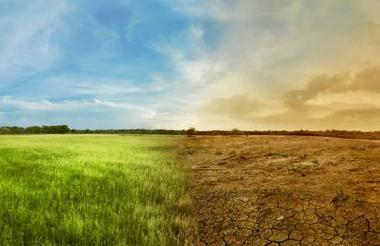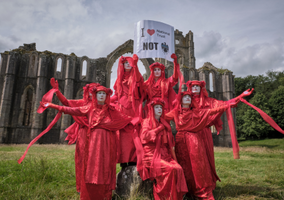With hotter summers and colder winters, and everything in between, the environmental crisis is closer to home than some of us may think – just in the last week of October, Spain witnessed over 200 deaths due to heavy rain and flooding.
But the environmental crises do not affect all people in the same way. Some of the most disadvantaged and marginalised people in the UK will also be most affected by the climate and nature crises.
As an organisation that seeks to tackle the racism, discrimination, and prejudice experienced by Romany Gypsy, Irish Traveller, Roma, New Traveller, Showmen and Boater communities, my charity is extremely aware of the impact extreme weather events can and will have on communities living on the road, in poorly ventilated and poorly insulated mobile homes.
Whilst over 75% of Romany Gypsy and Irish Traveller people live in bricks and mortar housing, community members who continue to live in caravans on the road and on sites are disproportionately at higher risk of flooding, heatwave exposure and air pollution.
Katharine Quarmby’s investigation into the routine placing of sites in risky and unsuitable locations highlights the devastating extent to which Gypsy and Traveller communities are spatially excluded to the absolute fringes of society, “placed” near recycling centres, flood plains, and fire service training locations, where noxious gases frequently descend on residents.
From decades of public policy experience, we know that rapid environmental policy making that doesn’t consider these types of inequalities could risk exacerbating them.
A role for charities to play
As social charities, we have a clear role to play. We need to support service users and clients to cope with the impacts of the environmental crises on their lives, by adapting our programmes and services.
We also need to empower beneficiaries to be part of the solutions to the environmental crises, by amplifying their voices in policy making and co-developing strategies and initiatives.
As a sector, we need to stop seeing the environmental crises as a separate issue that can be ignored or simply dealt with by specialist organisations. Instead, we must see the crises as the era we are living in, and a crucial context affecting all of our missions. The environmental crisis is here.
Practical solutions
When it came to translating our understanding into practical solutions, the breakthrough for us was realising that taking environmental action didn’t have to mean launching enormous new schemes of work.
Fundamentally, the path to practical solutions became clear once we started viewing our work through the prism of climate impact, from our strategic direction to our service delivery projects.
We’re now working on an environmental strategy, not as a standalone piece of policy, but as a looking glass from which to reflect on existing strategies and approaches. As is usually the case with our service delivery team, they’ve also sprang into action, developing project partnerships and on-the-ground initiatives to identify how the communities we work with can tackle the challenges ahead alongside us, and alongside each other.
To take more action in this space, the recently launched Everyone’s Environment Pathway sets out a step-by-step process for exploring the connections between the environmental crises and our collective work, reflecting with peers and users, taking action, and sharing learning.
There are defined roles for senior leaders and trustees, but also for self-identified environmental champions who are driving change within your organisation.
Social charities have trusted relationships with the communities that risk being worst impacted by environmental crises. And we have the tools, expertise and mechanisms through which to help. By turning our focus to this issue, we can bring about a fairer, healthier, more sustainable future for those that we seek to serve.












